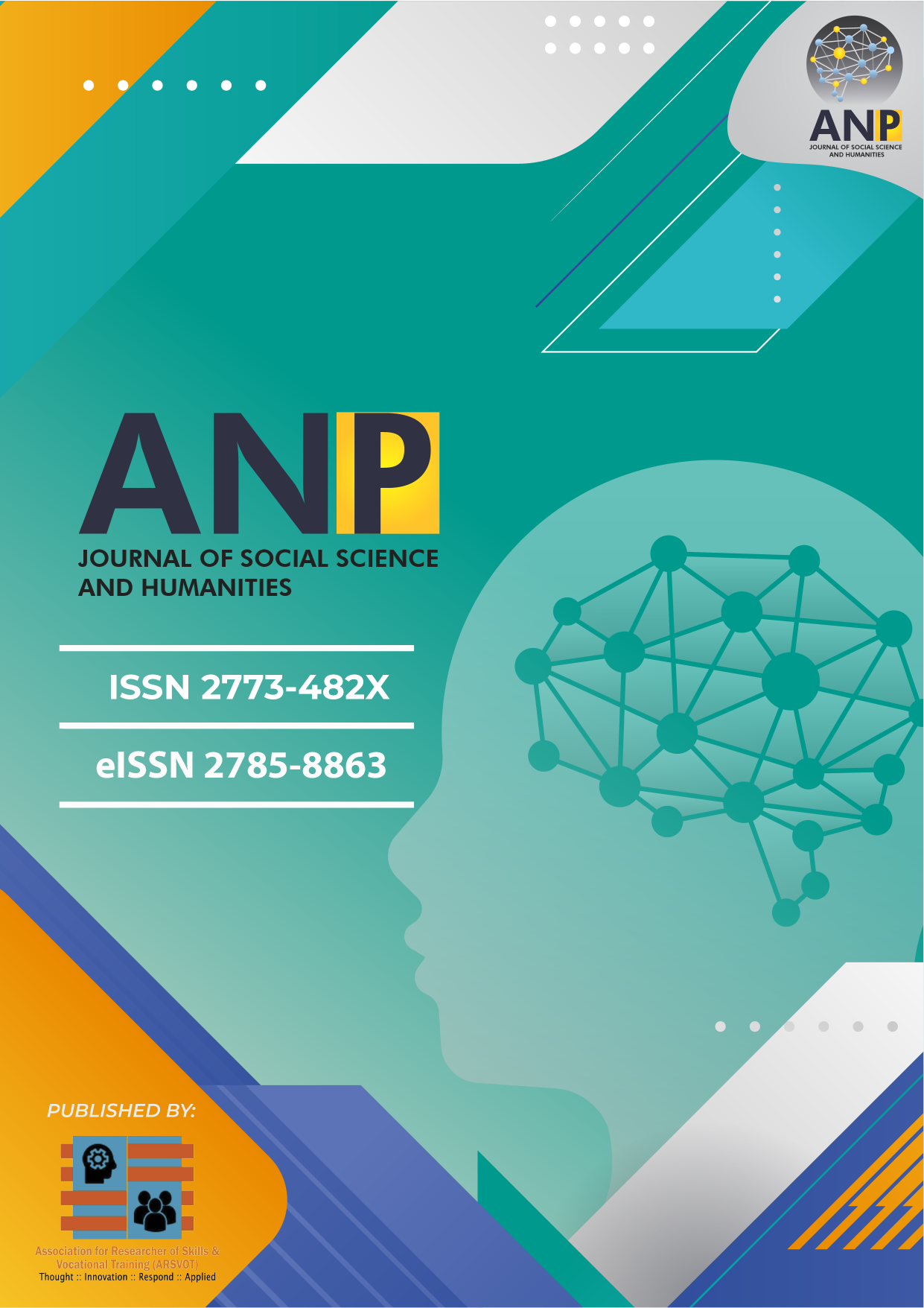Innovation in Teaching Methodology: Level of Student Acceptance of ‘Boyles Law Apparatus’ Teaching Aids in Thermodynamics Course
DOI:
https://doi.org/10.53797/anpjssh.v2i1.6.2021Keywords:
Teaching Methodology, “Boyle’s Law‟ Teaching Aids, ThermodynamicsAbstract
Boyle's law is used to explain the inverse relationship between pressure and the volume of gas at a constant temperature. This law states that when the pressured container is filled by increasing gas, thus the total volume will decrease. This research paper aims to study the level of student acceptance of teaching based on teaching aids (TA) Boyle's Law Apparatus (BLA) in the teaching and learning for the DJJ20063 Thermodynamics course. The questionnaire study was distributed to 66 respondents, namely Port Dickson Polytechnic‟s students of semester 2, Diploma in Mechanical Engineering program December 2019 session who involved in lectures where TA is used to give the students a clear vision in understanding the concept of Boyle Law in the topic of Perfect Gas. The data were analysed by using SPSS software through descriptive analysis statistics. The results of the study showed that the level of effectiveness of this TA is at a high level with an average mean score of 3.70 and standard deviation 0.447. Therefore, studies showed that the use of this teaching aids among students provides a better understanding, especially on the topic of Perfect Gas compared to teaching methods without the teaching aids that had been produced before. Through this method as well, the study found that students' interest and determination to deepen a lesson can be nurtured in more depth.
Downloads
References
Abulencia, J. P., Vigeant, M. A., & Silverstein, D. L. (2013, June). Using video media to enhance conceptual learning in an undergraduate thermodynamics course. In 2013 ASEE Annual Conference & Exposition (pp. 23-1346).
Budiyanto, A. (2015). „Pengembangan Alat Peraga Sederhana Struktur dan Organ Dalam Ikan untuk Mempermudah Pembelajaran pada Praktikum Ikhtiologi Perikanan‟, Jurnal Kelautan, vol. 8, no. 2, pp. 83-88.
Chowdhury, H., Alam, F., & Mustary, I. (2019). Development of an innovatiove technique for teaching and learning of laboratory experiments for engineering courses. Energy Procedia, 160(2018), 806–811. https://doi.org/10.1016/j.egypro.2019.02.154.
Chou, Y. C., Yen, H. Y., Yen, H. W., Chao, Y. L., & Huang, Y. H. (2015). The Effectiveness of Teaching Aids for Elementary Students' Renewable Energy Learning and an Analysis of Their Energy Attitude Formation. International Journal of Environmental and Science Education, 10(1), 39-49.
Chowdhury, M. S., & Shahabuddin, A. M. (2007). Self-Efficacy, Motivation and Their Relationship to Academic Performance of Bangladesh College Students. College Quarterly, 10(1), 1-9.
Christensen, W. M., Meltzer, D. E., & Ogilvie, C. A. (2009). Student ideas regarding entropy and the second law of thermodynamics in an introductory physics course. American Journal of Physics, 77, 907-917.
Dukhan, N. (2015). “On the Worldwide Engineering Students‟ Meager Performance in Thermodynamics.” QScience Proceedings 2015(4): 17.
Georgiou, H., Sharma, M. D., O‟Byrne, J., Sefton, I. & McInnes, B. (2009). University students‟ conceptions about familiar thermodynamic processes and the implications for instruction. Proceeding of The Australian Conference on Science and Mathematics Education (formerly UniServe Science Conference), (pp. 51-57).
Georgiou, H., & Sharma, M. D. (2012). University students‟ understanding of thermal physics in everyday contexts. International Journal of Science and Mathematics Education, 10, 1119-1142.
Hakim, A., Liliasari, L., Setiawan, A., & Amir, M. (2019, February). Thermodynamics interactive multimedia to improve physics prospective teacher‟s generic science skills. In Journal of Physics: Conference Series (Vol. 1157, No. 3, p. 032026). IOP Publishing.
Hasbi, M. A. (2015). Pengembangan Alat Peraga Listrik Dinamis (APLD) Berbasis Inkuiri Untuk Meningkatkan Penguasaan Konsep Siswa. Jurnal Penelitian Pendidikan IPA, 1(1).
Huang, M., & Gramoll, K. (2004, June). Online interactive multimedia for engineering thermodynamics. In ASEE Annual Conf. Proc., Salt Lake City, UT (pp. 20-23).
Krejcie, R. V., & Morgan, D. W. (1970). Determining sample size for research activities. Educational and psychological measurement, 30(3), 607-610.
Kulkarni, V. D., & Tambade, P. S. (2013). Enhancing the learning of thermodynamics using computer assisted instructions at undergraduate level. International Journal of Physics & Chemistry Education, 5(1), 2-10.
Lape, N. K. (2011). Tiered scaffolding of problem-based learning techniques in a thermodynamics course. In American Society for Engineering Education. American Society for Engineering Education.
Loverude, M. E., Kautz, C. H., & Heron, P. R. (2002). Student understanding of the first law of thermodynamics: Relating work to the adiabatic compression of an ideal gas. American journal of physics, 70(2), 137-148.
Manteufel, R. D. (1999). A spiral approach for mechanical engineering thermodynamics. In ASME Curriculum Innovation Award, ASME International Mechanical Engineering Conference, Nashville, TN, November (pp. 14- 19).
Mok, S. S. (2000). Ilmu pendidikan untuk KPLI:(Kursus Perguruan Lepas Ijazah) Semester 1. Kumpulan Budiman.
Pathare, S. R., & Pradhan, H. C. (2010). Students‟ misconceptions about heat transfer mechanisms and elementary kinetic theory. Physics Education, 45(6), 629.
Preliana, E. (2015). Pengembangan alat peraga sains fisika berbasis lingkungan untuk materi listrik statis pada siswa kelas IX SMP Negeri 3 Pleret. Jurnal Riset dan Kajian Pendidikan Fisika, 2(1), 6-11.
Rashidi, A., & Razak, H. (1996). Pengajaran Dalam Bilik Darjah Kaedah Dan Strategi.
Saputri, V. A. C., & Dewi, N. R. (2014). Pengembangan alat peraga sederhana eye lens tema mata kelas VIII untuk menumbuhkan keterampilan peserta didik. Jurnal Pendidikan IPA Indonesia, 3(2).
Sözbilir, M. (2003). A review of selected literature on students‟ misconceptions of heat and temperature. Boğaziçi Üniversitesi Eğitim Dergisi, 20(1), 25-41.
Vigeant, M., Prince, M., & Nottis, K. (2009). AC 2009-2039: Inquiry-Based Activities To Repair Misconceptions In Thermodynamics And Heat Transfer. age, 14, 1.
Yulianti, E., Zulkardi, Z., & Siroj, R. A. (2010). Pengembangan alat peraga menggunakan rangkaian listrik seri-paralel untuk mengajarkan logika matematika di SMK Negeri 2 Palembang. Jurnal Pendidikan Matematika, 4(1), 25-32.
Zidny, R., Fadhilah, G. A., Melda, G. E., Sholihah, I. I., Widiastuti, N. L., Haerunnisa, N., & El Islami, R. A. Z. (2019). Simple and Low-Cost Chemical Experiment Kits to Observe the Concept of Gas Laws. Jurnal Penelitian Dan Pembelajaran IPA, 5(1), 16. https://doi.org/10.30870/jppi.v5i1.3917.
Downloads
Published
How to Cite
Issue
Section
License
Copyright (c) 2021 Suhaila Mohd Sharif, Mohd Fitri Basiran, Norhazlina Amon

This work is licensed under a Creative Commons Attribution-NonCommercial-ShareAlike 4.0 International License.




